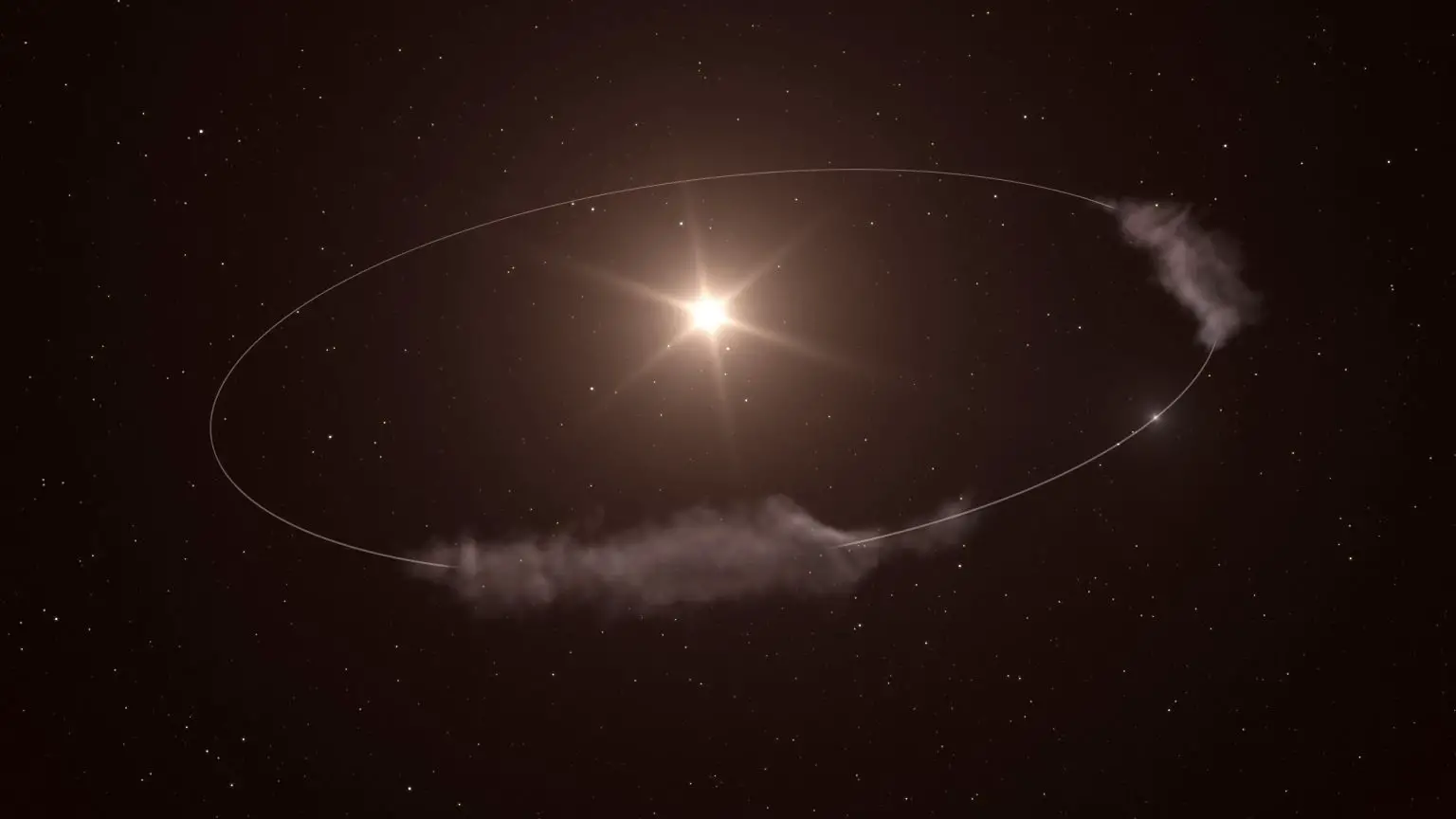Astronomers discover possible twin planets
- July 19, 2023
- 0
Using the Atacama Large Millimeter/submillimeter Array (ALMA), astronomers have discovered a cloud of debris around a distant star that could indicate a sister planet sharing the orbit of
Using the Atacama Large Millimeter/submillimeter Array (ALMA), astronomers have discovered a cloud of debris around a distant star that could indicate a sister planet sharing the orbit of

Using the Atacama Large Millimeter/submillimeter Array (ALMA), astronomers have discovered a cloud of debris around a distant star that could indicate a sister planet sharing the orbit of an existing planet.
Using the Atacama Large Millimeter/submillimeter Array (ALMA), astronomers have discovered a potential “sister” planet in deep space. They discovered a cloud of debris dividing this planet’s orbit, suggesting it could be a new planet in the process of formation or the remnants of a previously formed planet. If this discovery is confirmed, it will be the most convincing evidence for the existence of two exoplanets in the same orbit.
“Twenty years ago it was predicted that, in theory, pairs of planets with the same mass could have the same orbits around their stars, called Trojans or co-orbital planets. “This is the first time we have found evidence for this idea,” says Olga Balsalobre-Ruza, a student at the Center for Astrobiology in Madrid, Spain, who led the paper published today (July 19) in the journal Astronomy &. Astrophysics.
Trojans are rocky bodies that share an orbit with a planet, a common occurrence in our solar system. The most notable example is Jupiter’s Trojan asteroids, which are more than 12,000 rocky bodies that share Jupiter’s orbit around the Sun. Astronomers have suggested that Trojan planets may exist around stars other than our Sun, although evidence is lacking.
“Exo-Trojans [троянські планети за межами Сонячної системи] “So far it’s been like unicorns: theory allows them to exist, but no one has been able to detect them,” says co-author Jorge Lillo-Box, a senior researcher at the Center for Astrobiology.
Now, an international team of scientists has used ALMA, a project in partnership with the European Southern Observatory (ESO), to find the most convincing observational evidence for the existence of Trojan planets. This discovery took place in the PDS 70 system, a young star that contains two Jupiter-like planets, PDS 70b and PDS 70c. The team analyzed archived ALMA observations of this system and discovered a cloud of debris orbiting PDS 70b, where Trojans are expected to exist.
Trojans occupy two large regions, called Lagrangian regions, where the combined gravitational force of the star and planet orbiting a planet can capture material. After examining these areas in PDS 70b’s orbit, the astronomers detected a weak signal from one of them; This suggests it could be a cloud of debris with a mass about twice the mass of our Moon.
The team speculates that this debris cloud could indicate an existing Trojan world or a planet in the process of formation in this system. “Who can imagine two worlds where the length of the year and the living conditions are the same? Our study is the first proof that such a world can exist,” says Balsabre-Rosa. “As in the case of Jupiter, we can imagine that a planet could share its orbit with thousands of asteroids, but it’s surprising to me that planets can share the same orbit.”
“Our work is the first step towards finding co-orbiting planets in the very early stages of their formation,” says co-author Nuria Huelamo, a senior scientist at the Center for Astrobiology. “This opens up new questions about the formation of Trojans, how they evolved and how often they appear in different planetary systems,” adds Iciar De Gregorio-Monsalvo, head of ESO’s Science Office in Chile, who participated in the study.
Source: Port Altele
As an experienced journalist and author, Mary has been reporting on the latest news and trends for over 5 years. With a passion for uncovering the stories behind the headlines, Mary has earned a reputation as a trusted voice in the world of journalism. Her writing style is insightful, engaging and thought-provoking, as she takes a deep dive into the most pressing issues of our time.